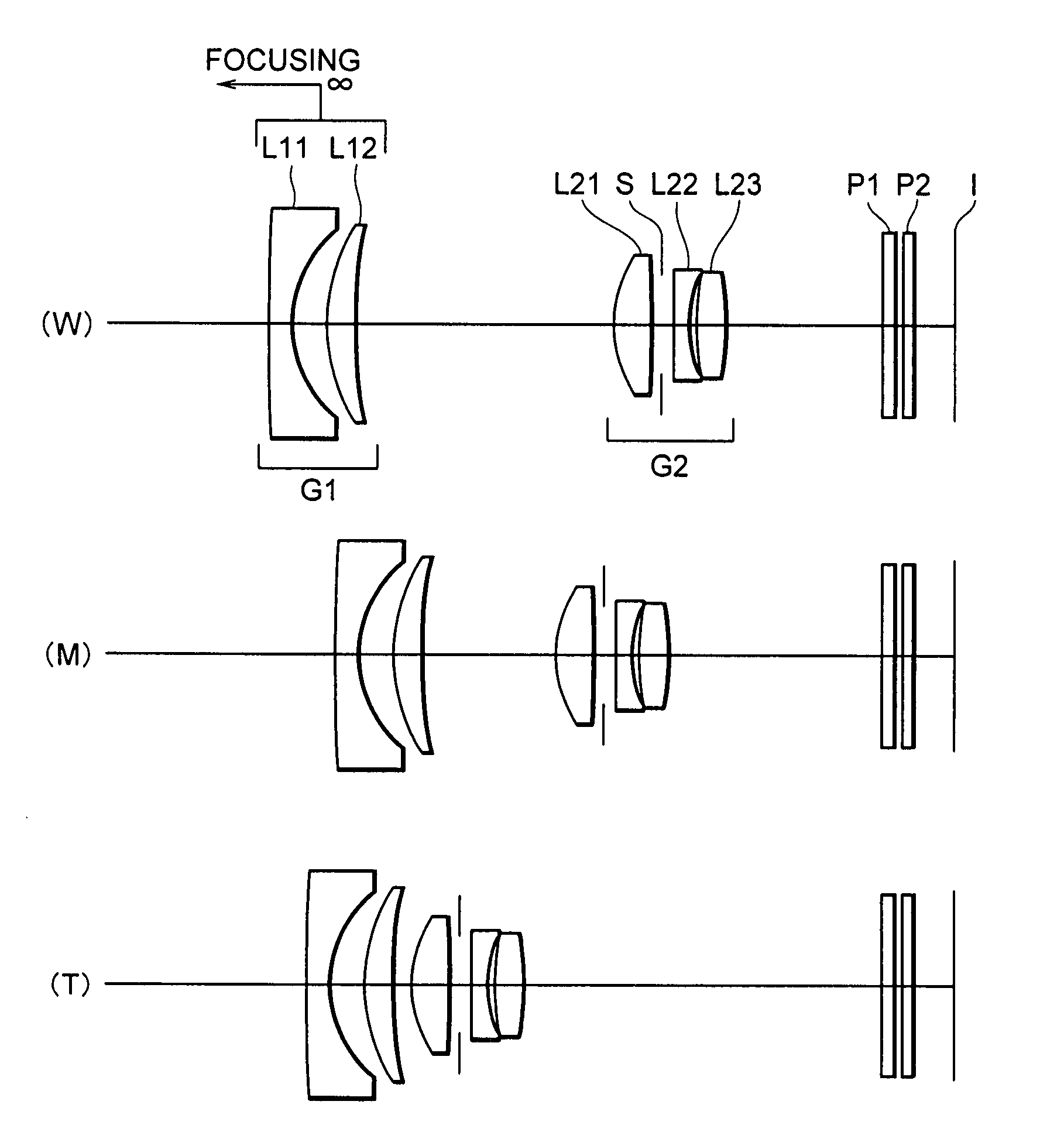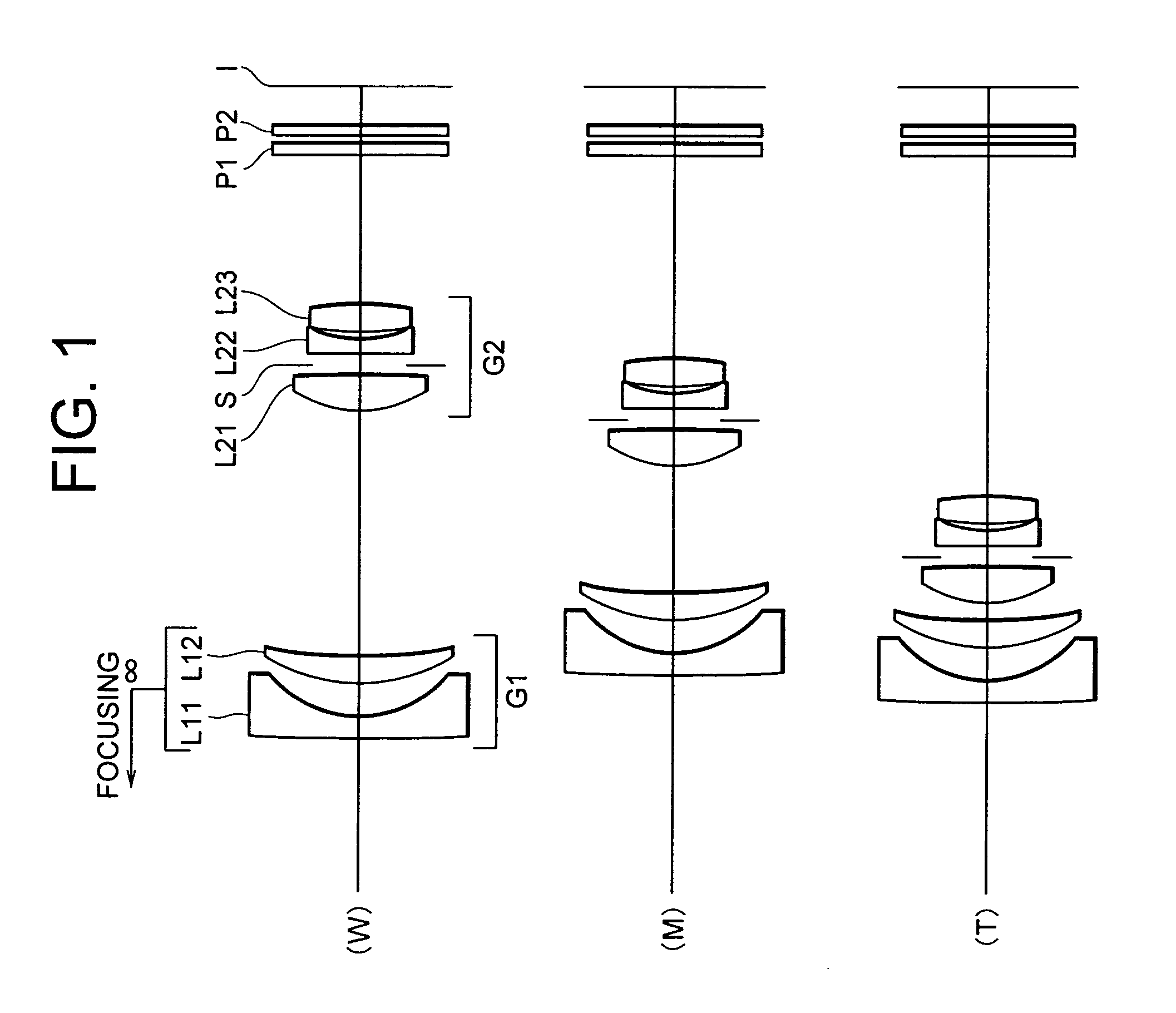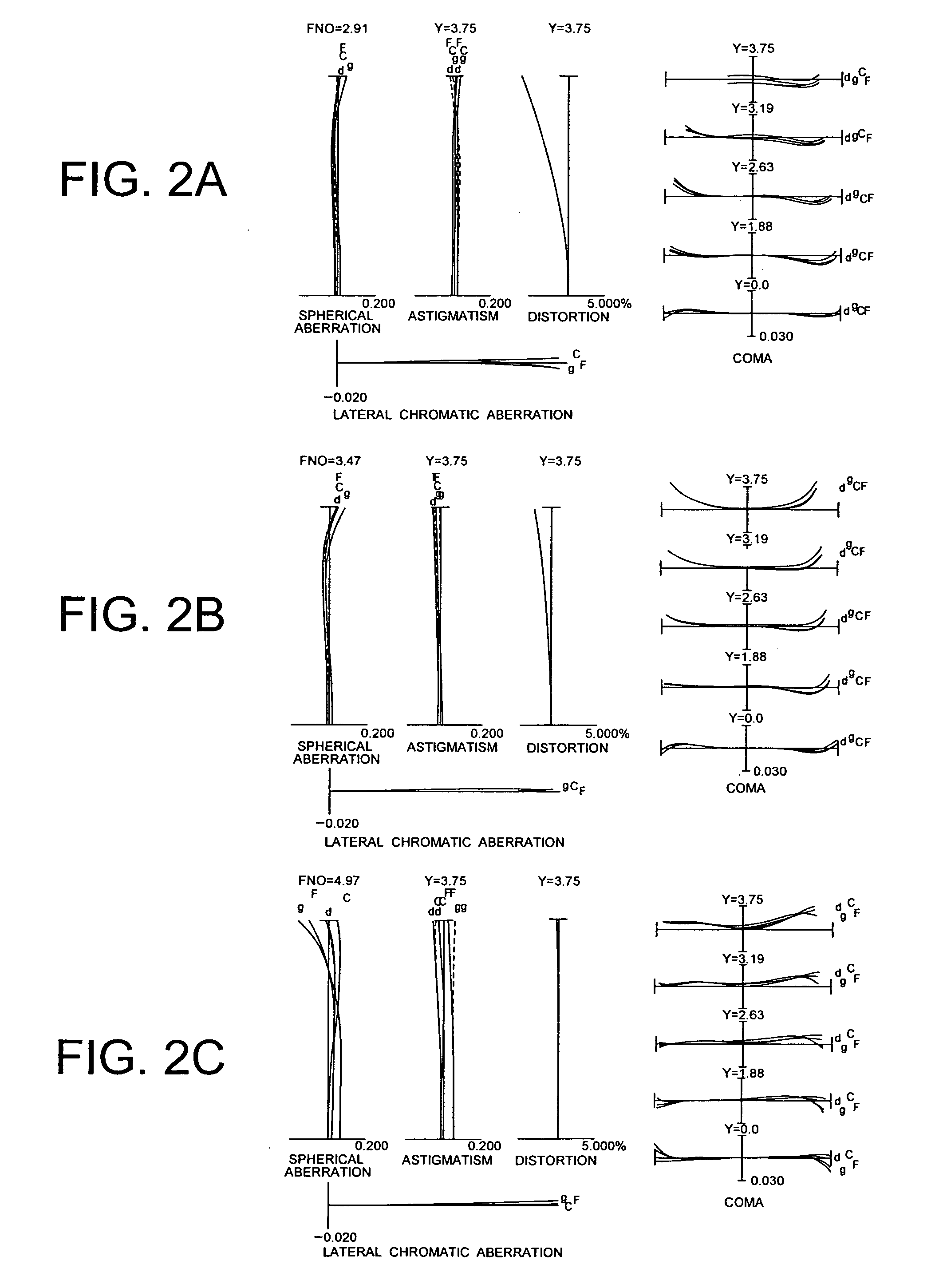Zoom lens system
a technology of zoom lens and zoom lens, applied in the field of zoom lens system, can solve the problems of becoming difficult to achieve the effect of compact, lightweight, and slimming
- Summary
- Abstract
- Description
- Claims
- Application Information
AI Technical Summary
Benefits of technology
Problems solved by technology
Method used
Image
Examples
example 1
[0080]FIG. 1 is a diagram showing a lens configuration of a zoom lens system according to Example 1 of the present application in which W shows a wide-angle end state, M shows an intermediate focal length state, and T shows a telephoto end state. Reference symbols designating respective lenses used in the following explanations are listed only on the figure representing the wide-angle end state W. In the other focal length states, to list reference symbols is omitted.
[0081] The zoom lens system according to Example 1 of the present application is composed of, in order from an object, a first lens group G1 having negative refractive power, and a second lens group G2 having positive refractive power. Upon zooming from a wide-angle end state W to a telephoto end state T, a distance between the first lens group G1 and the second lens group G2 varies.
[0082] The first lens group G1 has negative refractive power as a whole and is composed of two lenses which are a negative meniscus lens ...
example 2
[0096]FIG. 4 is a diagram showing a lens configuration of a zoom lens system according to Example 2 of the present application in which W shows a wide-angle end state, M shows an inter mediate focal length state, and T shows a telephoto end state. Reference symbols designating respective lenses used in the following explanations are listed only on the figure representing the wide-angle end state W. In the other focal length states, to list reference symbols is omitted.
[0097] The zoom lens system according to Example 2 of the present application is composed of, in order from an object, a first lens group G1 having negative refractive power, and a second lens group G2 having positive refractive power. Upon zooming from a wide-angle end state W to a telephoto end state T, a distance between the first lens group G1 and the second lens group G2 varies.
[0098] The first lens group G1 has negative refractive power as a whole and is composed of two lenses which are a negative meniscus lens...
example 3
[0105]FIG. 7 is a diagram showing a lens configuration of a zoom lens system according to Example 3 of the present application in which W shows a wide-angle end state, M shows an inter mediate focal length state, and T shows a telephoto end state. Reference symbols designating respective lenses used in the following explanations are listed only on the figure representing the wide-angle end state W. In the other focal length states, to list reference symbols is omitted.
[0106] The zoom lens system according to Example 3 of the present application is composed of, in order from an object, a first lens group G1 having negative refractive power, and a second lens group G2 having positive refractive power. Upon zooming from a wide-angle end state W to a telephoto end state T, a distance between the first lens group G1 and the second lens group G2 varies.
[0107] The first lens group G1 has negative refractive power as a whole and is composed of two lenses which are a negative meniscus lens...
PUM
 Login to View More
Login to View More Abstract
Description
Claims
Application Information
 Login to View More
Login to View More - R&D
- Intellectual Property
- Life Sciences
- Materials
- Tech Scout
- Unparalleled Data Quality
- Higher Quality Content
- 60% Fewer Hallucinations
Browse by: Latest US Patents, China's latest patents, Technical Efficacy Thesaurus, Application Domain, Technology Topic, Popular Technical Reports.
© 2025 PatSnap. All rights reserved.Legal|Privacy policy|Modern Slavery Act Transparency Statement|Sitemap|About US| Contact US: help@patsnap.com



